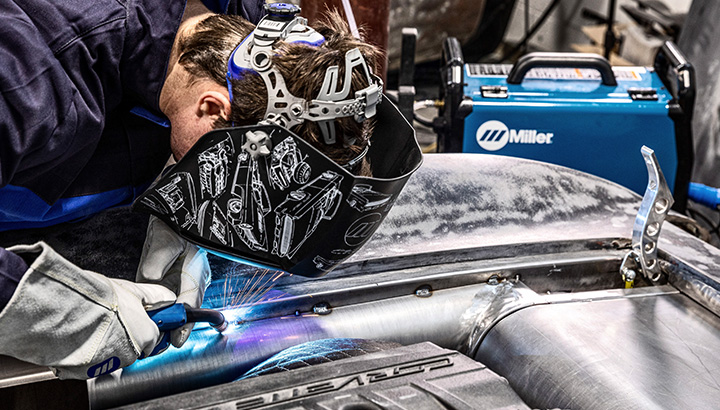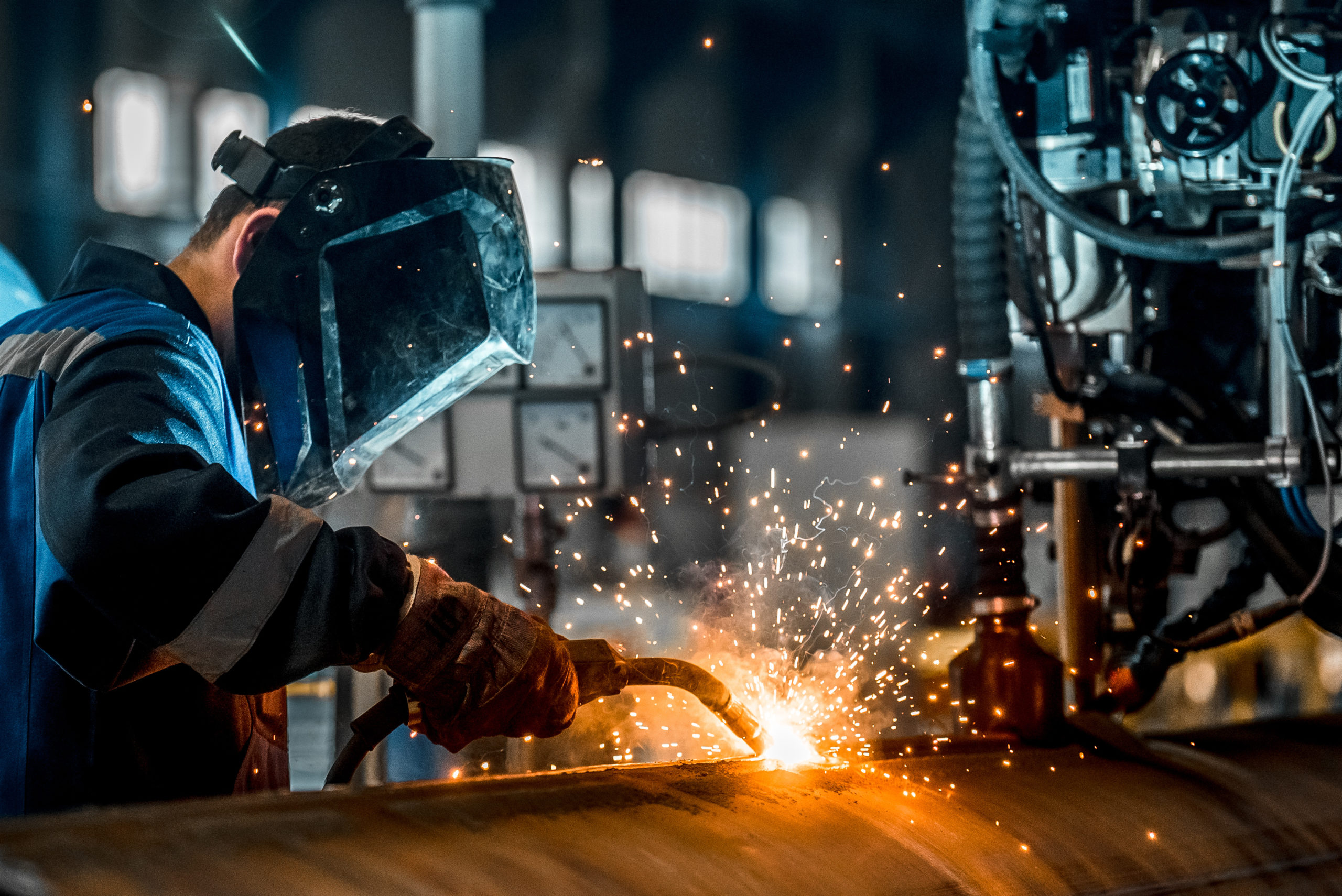Belgrade Fabrication’s essential steps for dealing with incomplete fusion
Everything about Welding: Secret Insights Into Techniques and Best Practices for Success
Welding encompasses a range of techniques, each fit for certain materials and applications. Recognizing these approaches, such as GMAW, SMAW, and TIG, is vital for accomplishing ideal outcomes. In addition, the best equipment and safety and security practices can not be ignored. As preparation and fixing play vital functions in the welding procedure, grasping these components can considerably improve the top quality of the final product. What are the crucial factors that guarantee a successful weld?
Comprehending Different Welding Strategies
Welding techniques incorporate a range of methods, each fit to specific applications and materials. Among one of the most common techniques are Gas Metal Arc Welding (GMAW), Shielded Metal Arc Welding (SMAW), and Tungsten Inert Gas Welding (TIG) GMAW, likewise recognized as MIG welding, is prominent for its speed and versatility, making it perfect for slim materials. SMAW, or stick welding, is favored for its simplicity and performance in outside atmospheres, particularly with thicker steels. TIG welding provides precision and control, making it suitable for elaborate work and non-ferrous metals (Welding). Each technique has its one-of-a-kind advantages and factors to consider, allowing welders to pick the ideal method based upon the task's requirements, product kind, and desired end results. Understanding these methods is important for successful welding
Vital Welding Devices and Devices
While different welding techniques call for certain abilities, the best equipment and tools are similarly vital for achieving quality results. Important welding tools includes welding makers, which vary depending on the method-- such as MIG, TIG, or stick welding. Safety equipment, including headgears, handwear covers, and aprons, guarantees safety and security and comfort throughout the process. In enhancement, components and clamps assist secure materials in position, guaranteeing precision in welds. Consumables like welding rods, cord, and securing gas are also vital components that affect the top quality of the weld. Devices such as grinders and cutters promote surface area preparation and post-weld ending up, adding to a professional result. Investing in high-quality devices inevitably enhances the effectiveness and performance of welding jobs.
Safety And Security Practices in Welding
Proper security techniques are important in the welding market to secure workers from potential risks. Welders need to put on ideal individual protective equipment (PPE), including headgears with correct shading, gloves, and flame-resistant garments. Appropriate ventilation is important to minimize exposure to harmful fumes and gases generated throughout the welding procedure. Additionally, employees need to be learnt the correct handling of welding devices to stop crashes. Fire precaution, such as keeping flammable materials away from the welding location and having fire extinguishers easily available, are necessary. Routine examinations of equipment and offices can help identify prospective dangers prior to they cause mishaps. By adhering to these safety and security practices, welders can produce a safer working setting and lessen dangers connected with their trade.
Preparing Products for Welding
Preparing materials for welding is an important step that greatly influences the quality and honesty of the last product (Montana Mobile Welding and Repair Fabrication). Proper preparation involves cleaning up the surface areas to remove impurities such as oil, dust, and rust, which can endanger the weld. Strategies such as grinding, fining sand, or making use of solvents are frequently utilized to attain a clean surface area. In addition, making sure that the materials fit with each other well is essential; gaps can cause weak welds. It's also essential to think about the placement and positioning of the components, as this will certainly impact the ease of welding and the final end result. Choosing the ideal filler product and making certain compatibility with the base steels is essential for achieving solid, long lasting welds.
Tips for Achieving High-Quality Welds
Achieving premium welds requires focus to information and adherence to ideal techniques throughout the welding procedure. Proper joint preparation is important, guaranteeing surface areas are cost-free and tidy from impurities. Picking the proper filler material and welding technique based upon the base metals is vital for excellent bonding. Keeping regular travel speed and angle while welding can prevent issues and advertise uniformity. Furthermore, regulating warm input is vital; excessive warmth can lead to bending and damaged joints. If needed, consistently checking the welds during the procedure permits for instant changes. Finally, using suitable post-weld therapies, such as cleansing and tension alleviation, can enhance the sturdiness and integrity of the weld, eventually making read more certain a successful outcome.
Fixing Common Welding Issues
Welding typically presents difficulties that can impact the high quality and integrity of the end product. Common concerns such as porosity, inconsistent weld grains, and overheating can arise, each requiring particular fixing strategies. Understanding these troubles is essential for welders to boost their abilities and achieve suitable results.
Porosity Problems Discussed
Although porosity can commonly be forgotten, it remains a crucial problem in welding that can jeopardize the stability of an ended up item. Porosity refers to the existence of little gas pockets within the weld bead, which can lead and deteriorate the joint to premature failing. This problem commonly arises from pollutants, wetness, or inappropriate securing gas insurance coverage throughout the welding process. To mitigate porosity, welders must validate that the base materials are tidy and completely dry, make use of suitable protecting gases, and preserve constant welding parameters. On a regular basis evaluating the tools and environment can likewise help recognize prospective problems prior to they materialize in the weld. Dealing with porosity successfully is important for attaining solid, long lasting welds that meet top quality requirements.

Irregular Weld Beans
Irregular weld beads can significantly affect the high quality and stamina of a finished product. Different factors contribute to this problem, including incorrect travel speed, wrong amperage settings, and inconsistent electrode angles. When the welder relocates also promptly, a grain may show up narrow and do not have infiltration, while relocating also slowly can create excessive build-up. Furthermore, using the incorrect amperage can cause either damaging or excessive spatter, both of which compromise weld honesty. The welder's strategy, such as inconsistent lantern motion, can additionally result in uneven grain look. To reduce these problems, welders should concentrate on maintaining constant, regulated movements and making certain correct tools setups to attain uniformity in their welds. Consistency is crucial to accomplishing reliable and strong welds.
Getting Too Hot and Bending Issues
Extreme heat during the welding process can lead to considerable getting too hot and deforming concerns, affecting the architectural stability of the workpiece. These troubles frequently manifest as distortion, which can endanger alignment and fit-up, making additional setting up testing. Aspects adding to overheating consist of the selection of welding criteria, such as voltage and travel speed, in addition to the type of product being welded. To reduce these concerns, welders must preserve consistent travel rate and ideal warmth input while keeping track of the workpiece temperature level. Furthermore, preheating or post-weld warm treatment can assist alleviate anxieties brought on by rapid air conditioning - Montana Mobile Welding and Repair Fabrication. Normal inspection and adherence to finest techniques are crucial in avoiding getting too hot and guaranteeing the longevity and dependability of bonded structures
Frequently Asked Concerns
What Are the Job Opportunities in the Welding Industry?
The welding industry uses varied career possibilities, consisting of placements as welders, examiners, educators, and designers. Specialists can work in manufacturing, building, aerospace, and automobile sectors, profiting from strong demand and competitive incomes in various roles.
Exactly How Can I Boost My Welding Speed Without Giving Up Top Quality?
To boost welding rate without giving up quality, one ought to practice reliable techniques, maintain tools, maximize settings, and improve hand-eye sychronisation. Routine training and seeking responses can likewise considerably add to attaining faster, high-grade welds.
What Certifications Are Available for Welders?
Various qualifications exist for welders, including those from the American Welding Culture (AWS), the National Center for Construction Education And Learning and Research (NCCER), and numerous industry-specific companies. These credentials boost employability and demonstrate skill efficiency.
How Does Welding Affect the Features of Metals?
Welding influences the homes of steels by altering their microstructure, which can cause adjustments in ductility, firmness, and strength. Warmth input and cooling rates throughout the process considerably influence these product attributes.
Can I Weld Dissimilar Metals Together?
